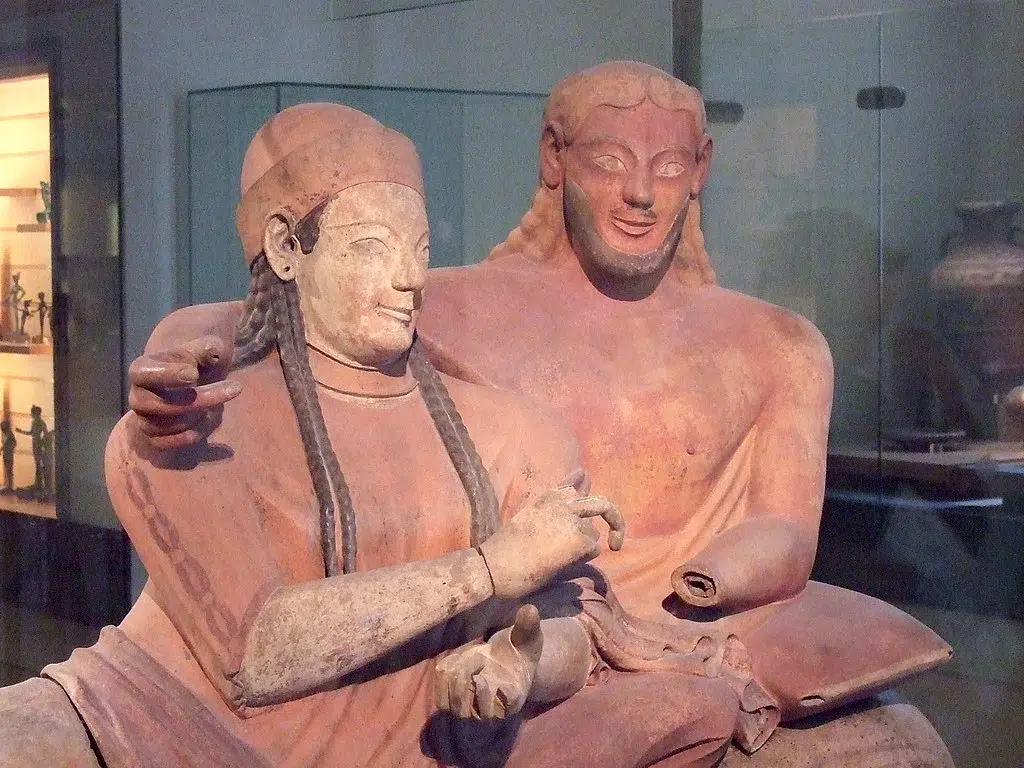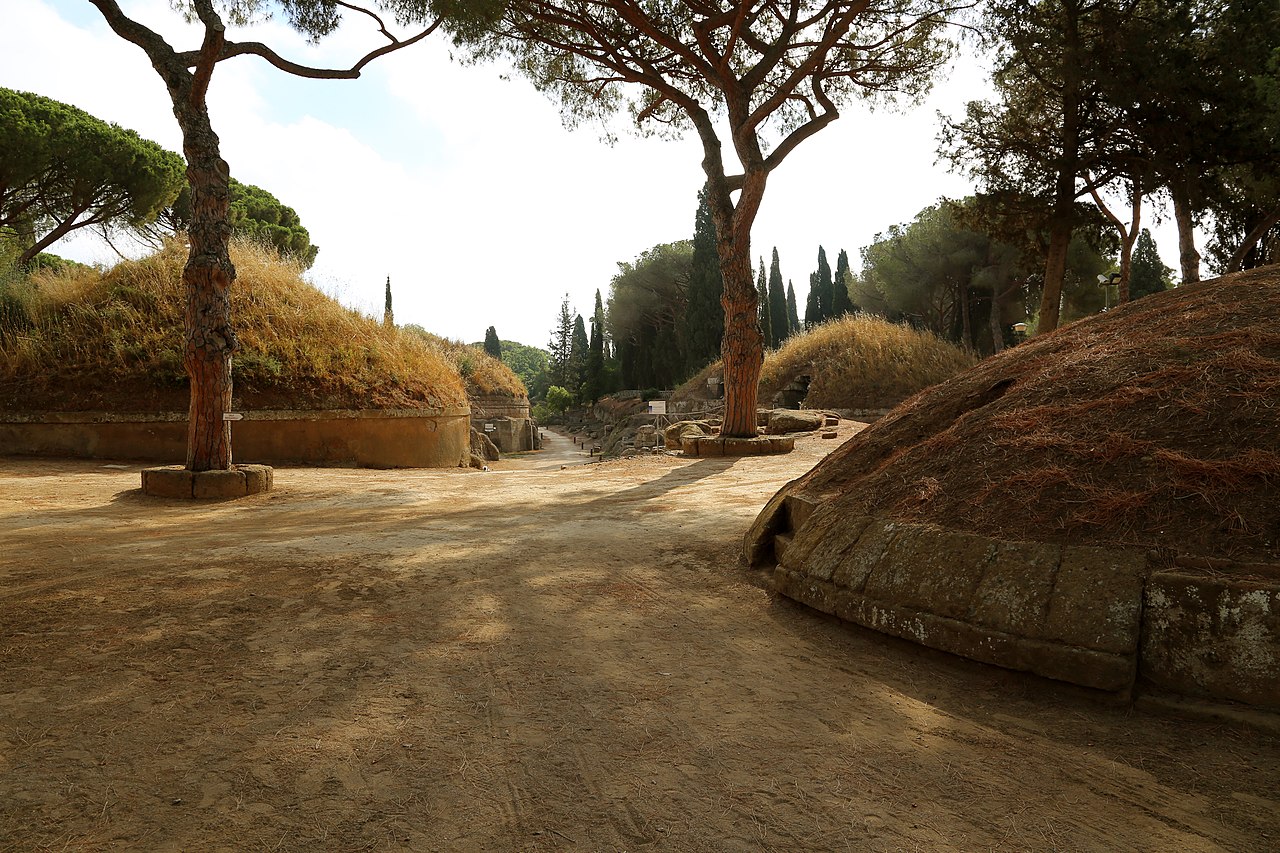
The Etruscans were a relatively enigmatic people who lived in ancient Italy. They dominated the central region of Italy from about 700 BCE until the rise of Rome and the southern Greek city-states. Due to the difficulties in translating their inscriptions, there is considerable debate about their origin. What does the evidence really show about the origin of the Etruscans?
Ancient claims about the origin of the Etruscans
The ancient historian Herodotus was the first person to write about the origin of the Etruscans as far as surviving records are concerned. According to him, they originated from western Anatolia. In the era of the Trojan War, their original territory suffered a terrible famine.
As a result, half of the nation migrated to Italy to find a new home. They settled in Central Italy, forming Etruria. The vast majority of ancient historians accepted this basic origin for the Etruscans. However, there were some exceptions. One notable example is Dionysius of Halicarnassus.
Famously, this historian of the first century BCE argued against the Anatolian origin of the Etruscans. Instead, he argued that they were the native inhabitants of Italy.
Some modern sources also claim that certain other first-century BCE records attribute the origin of the Etruscans to the area north of Italy. However, this is untrue. Livy is the source for this idea. Yet, what he actually says is that the Etruscans migrated to that northern region after they had first settled in Central Italy. Therefore, there were only two opposing theories concerning the Etruscans’ origins in antiquity rather than three.
Archaeological evidence
One of the main reasons why Dionysius of Halicarnassus denied that the Etruscans had come from Anatolia is because he could not perceive any strong similarities between them and the nations that lived in Anatolia in his own time. Fortunately, historians today have the benefit of modern archaeology. This allows us to come to far more reliable conclusions.
As it happens, archaeology has revealed that the Etruscans entered a phase called the Orientalizing period around 700 BCE. At this time, we see a sudden influx of Anatolian elements arriving in Etruria. Archaeologist Jodi Magness explained it as such:
“Near Eastern influence is evident on almost all aspects of Etruscan life, including art, clothing, chariots, military equipment and warfare, hairstyles, dining habits, religion or cult, and technology.”
In view of the legend of the Etruscans having their origin in Anatolia, this is significant. It is true that the Greeks also went through their own Orientalizing period. However, it mostly took the form of gradually adopting some Near Eastern art styles. This is easily explained through trade.
In contrast, the Orientalizing period among the Etruscans affected almost every aspect of their society, and it was far more sudden in its conception. Attempting to explain this through trade is hardly convincing since the Greeks were geographically closer to Anatolia and had been trading with that region for longer.
Evidence from monumental tombs

How can we be sure whether or not the “Oriental inundation” among the Etruscans was really the result of a migration? In the absence of contemporary written sources, this is difficult to answer. However, one of the most secure methods of archaeologically establishing an actual migration is to look at burial customs.
Around 700 BCE, there was a general social upheaval in Etruria. This is when the first true Etruscan cities appeared. The same can be said regarding Etruscan sculpture. The Etruscans also adopted the Greek alphabet at this time. All of these show that some significant changes occurred around the year 700 BCE in Etruria.
However, for our purposes, the most interesting change was the sudden adoption of monumental tombs. These Etruscan tombs were evidently the resting places of the elite class. Fascinatingly, archaeologists have noted that these monumental tombs display some striking similarities to contemporary Phrygian and Lydian tombs.
For example, Etruscan tombs of this early period included benches, parapets, and headrests just like those found in Anatolia. Furthermore, they also contained a stone basement with decorations of circular rings similar to Lydian tombs. The Etruscans also had funerary statues which match those of ancient Anatolia.
The origin of the Etruscans according to genetics
From this evidence, it seems very likely that the elite class of Etruria from around 700 BCE onwards really did come from Anatolia. Logically, this is the origin of the legend recorded by Herodotus regarding the origin of the Etruscans.
However, what about common people? To what degree did the Etruscans as a whole come from Anatolia? Was it just the elite class, in the same vein as when the Normans invaded Britain, or was it a large migration in which a considerable portion of the Etruscan population came from Anatolia?
Genetic studies can help us answer that question. A landmark study of ancient DNA in 2021 revealed that a considerable portion of Etruscan DNA in the dataset could be attributed to Iron Age Southern European populations, such as those of Greece and Croatia in particular.
This genetic connection to the Balkans provides notable support to Herodotus’ report about the origin of the Etruscans. We have seen that archaeological evidence indicates this migration really occurred around 700 BCE rather than in the Bronze Age. As it happens, by that time, a number of Iron Age Southern European nations had already migrated to western Anatolia.
In particular, the Phrygians came from the Balkans. The Greeks, too, had extensively settled in western Anatolia by 700 BCE. Therefore, a migration from western Anatolia to Italy in 700 BCE would plausibly have included large numbers of Phrygians and Greeks. This theorized origin of the Etruscans is consistent with both genetic and archaeological evidence.
See all the latest news from Greece and the world at Greekreporter.com. Contact our newsroom to report an update or send your story, photos and videos. Follow GR on Google News and subscribe here to our daily email!



